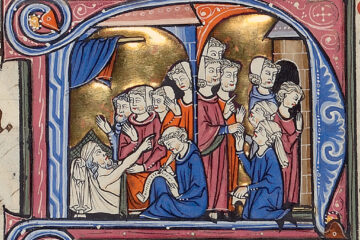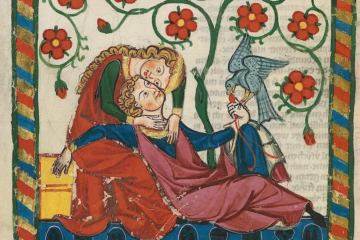Accounts of the First Crusade are few and far in between, however, through careful reading and studying I have encountered many irregularities in modern texts regarding the event.
Following events that have as little foundation as a house built on a hill, we know for sure that the “Rum Caliphate” most likely did not exist or was called that at all. The Caliph was Emir IV. Through Muslim texts, which are far more objective on the matter, I was able to find out the sheer level of statecraft that he possessed. By the age of nine, he showed signs of being an excellent diplomat. Allying himself with the Ghilman tribes of the Maghreb, he was able to destabilize the dying corpse of the New Roman Empire. A civil war erupted and in the ensuing chaos, he laid siege to the Holy Lands surrounding Jerusalem.
It is claimed that Emir laid siege to Jerusalem in 1052, however, I place that number further back at 1032. One of the most common misconceptions of our history is the so-called “Gap of 1030-1050” where two decades of human history have not been written down in Europe. The reasons are not known to me. Personally I believe it had something to do with the “Roman fire of 1042” and the possible loss of many scriptures there.
Nevertheless, Muslim sources prove to be essential in our understanding of our own history. Jerusalem was besieged in 1032 with the Caliph uttering his famous words:
“He who is master of Jerusalem is master of the World.”
What came after was possibly one year of siege until the relief forces of Europe came. They came on the behest of Pope Titus II, who called for war on the behalf of Emperor Charles II. The reasoning is again unknown, as that seems to be the theme of this time period. Most likely the English intended to gain control of land as far as Jerusalem and saw no easier way than to involve the entirety of Europe.
The famous battle of Dungldir is embellished beyond recognition as is much in “Historia Magna” as it seems to have been written based on opinion, fantasy, and only oral accounts. Nevertheless, it shows us the ease at which feeble minds can be swayed.
The name Dungladir refers to a stretch of land north of the City, which bears the name now, based on the folk legend. The number of 200.000 men on both sides is so outlandish that I cannot begin to comprehend it. The Europeans would have had no more than 50-60.000 men, and the Turks around 80.000. Of course, these reports fail to mention the employment of mercenaries on the European side, which easily matched the number of the besiegers. The battle was not a decisive victory for either side. Both sides took heavy casualties, however, European reinforcements of some 10.000 from Hungary were on their way to relieve the main force. Emir then ordered an assault on the City, fearing to be crushed against the walls. Against all odds, he was able to take the city and refortify it.
The Europeans laid siege to it within the month and called for the surrender of the besiegers, offering them either a slow or quick death. The Turks, plagued by disease and infection after the battle, resorted to throwing their sick across the walls using the catapults already there. Scholars argue that this is what caused the emergence of the Death, in the long run at least. Short term, it did little to the attackers. Emir managed to escape the city, while the besiegers made an attempt to take it, and succeeded.


